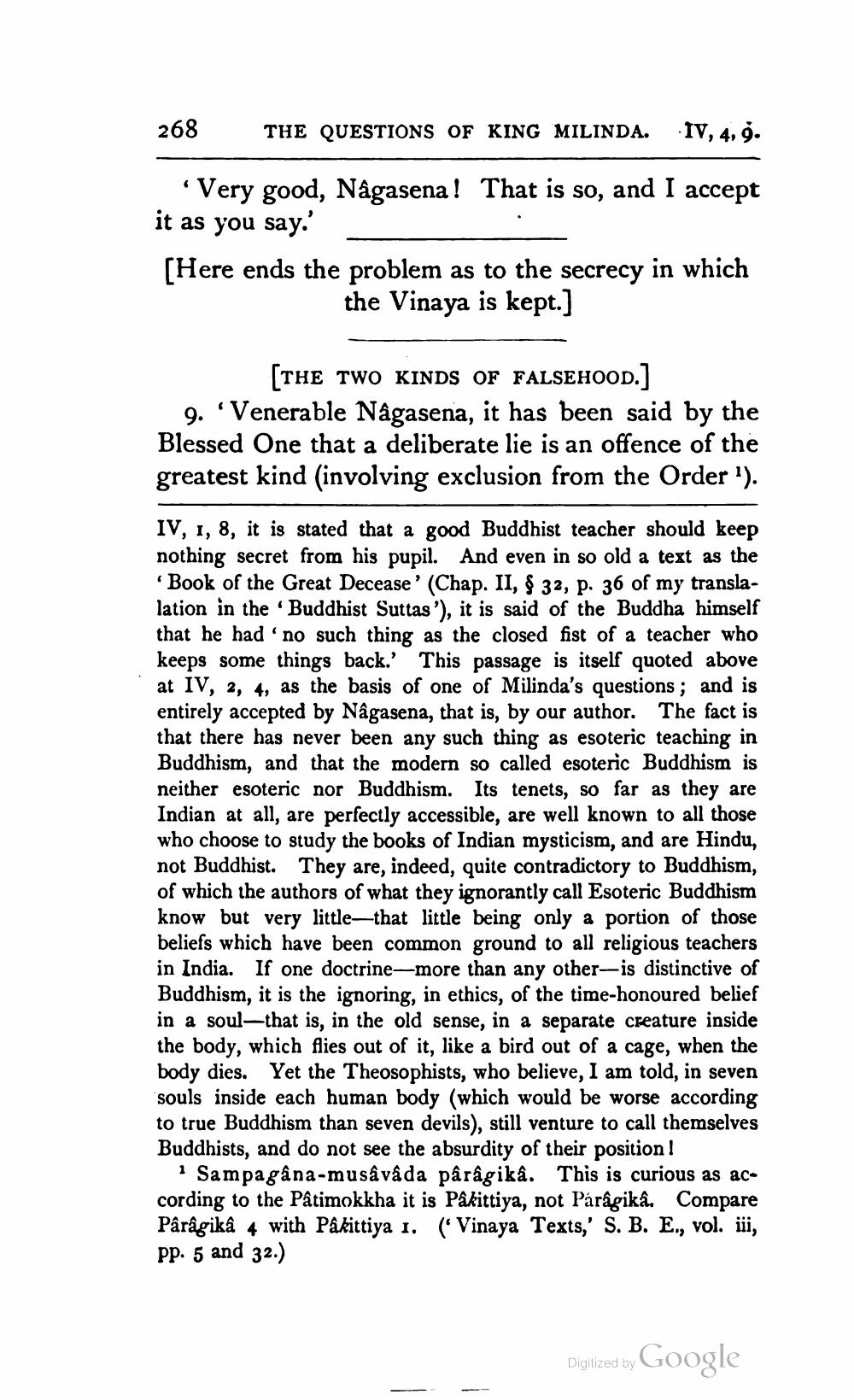________________
THE QUESTIONS OF KING MILINDA.
IV, 4, 9.
'Very good, Nâgasena! That is so, and I accept it as you say.'
268
[Here ends the problem as to the secrecy in which the Vinaya is kept.]
[THE TWO KINDS OF FALSEHOOD.]
9. 'Venerable Nâgasena, it has been said by the Blessed One that a deliberate lie is an offence of the greatest kind (involving exclusion from the Order 1).
IV, 1, 8, it is stated that a good Buddhist teacher should keep nothing secret from his pupil. And even in so old a text as the 'Book of the Great Decease' (Chap. II, § 32, p. 36 of my translalation in the 'Buddhist Suttas'), it is said of the Buddha himself that he had no such thing as the closed fist of a teacher who keeps some things back.' This passage is itself quoted above at IV, 2, 4, as the basis of one of Milinda's questions; and is entirely accepted by Nâgasena, that is, by our author. The fact is that there has never been any such thing as esoteric teaching in Buddhism, and that the modern so called esoteric Buddhism is neither esoteric nor Buddhism. Its tenets, so far as they are Indian at all, are perfectly accessible, are well known to all those who choose to study the books of Indian mysticism, and are Hindu, not Buddhist. They are, indeed, quite contradictory to Buddhism, of which the authors of what they ignorantly call Esoteric Buddhism know but very little that little being only a portion of those beliefs which have been common ground to all religious teachers in India. If one doctrine-more than any other-is distinctive of Buddhism, it is the ignoring, in ethics, of the time-honoured belief in a soul—that is, in the old sense, in a separate creature inside the body, which flies out of it, like a bird out of a cage, when the body dies. Yet the Theosophists, who believe, I am told, in seven souls inside each human body (which would be worse according to true Buddhism than seven devils), still venture to call themselves Buddhists, and do not see the absurdity of their position!
1 Sampagâna-musâvâda pârâgikâ. This is curious as according to the Pâtimokkha it is Pâkittiya, not Párâgikâ. Compare Pârâgikâ 4 with Pâkittiya 1. (Vinaya Texts,' S. B. E., vol. iii, pp. 5 and 32.)
Digitized by Google




